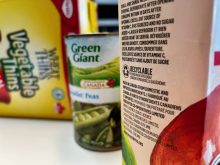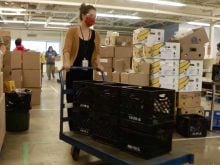Late winter was historically the time of the “hunger moon.” The larder of winter food was low and people waited anxiously for the land to produce again.
People could only dream of a time when they would not have to worry they had enough.
In Canada “Food Freedom Day” a designation of Canadian Federation of Agriculture reminds people in this country that food has indeed become abundant and is accessible to most, pointing out that the middle of February average income earners have earned enough money to pay for all they need for the rest of the year.
Read Also

Local farm businesses, groups look forward to Manitoba Ag Days 2026
Most of agriculture is seemingly at Manitoba Ag Days each January: Manitoba agribusinesses and farm groups look forward to connecting with farmers at the 2026 show.
In 2011, Canadians are expected to have spent 11.8 per cent of their disposable income on food ($3,583) based on a calculation of disposable income per capita of approximately $30,255.
This year Food Freedom Day fell on February 12.
Canadians can take pride in having some of the safest and most affordable food in the world, said Ron Bonnett, president of the Canadian Federation of Agriculture which has designated the day.
But he also took the occasion this year to remind Canadians that while there’s clearly value for them in the current system, it is one much in need of an overhaul.
What’s needed is a longer-term plan or strategy that begins to create longer-term value, and embrace a broader vision for food and agriculture, Bonnett said.
Last year the CFA tabled National Food Strategy, A Framework for Securing the Future of Food, a document calling for a more holistic and strategic approach to food and agriculture that is more responsive to current needs both domestically and internationally.
The National Food Strategy looks to a future where the food system would promote a Canadian eating brand focused on improving health, while fostering economic growth, improving farm profitability and sustaining ecosystems.
It’s one of a series of blueprints or maps put forward in the past three years, that come from a diverse range of groups, all ultimately looking for more value in food.
The Canadian Agri-Food Policy Institute in a 2009 report released Building Convergence: Toward an Integrated Health and Agri-Food Strategy for Canada, made the case for tying agriculture together with health policy, shifting consumer preferences towards healthier homegrown foods while improving returns to farmers.
Last February CAPI also released another document titled Canadian Agri-Food Destination pointing to Canadian agriculture’s falling profitability and declining relevance, and calling for a less “farm-centric” focus on agricultural support programs.
Since then other voices have joined the chorus. On the eve of the federal election, Food Secure Canada, representing grassroots food security and local food movement groups across the country released Resetting the Table: A People’s Food Policy for Canada, emphasizing the need for programs that spur farm entrants and creation of policies that ensure all Canadians regardless of income have access to healthy food. It also pointed to Canada as the only G8 country without a nationally funded school meal program.
The Conference Board of Canada has also waded in, last year rolling out its multi-year Centre for Food In Canada initiative to create a framework for more co-ordinated and proactive food strategy.
Meanwhile a host of local initiatives at the municipal and provincial levels have also called for food policy, including in Manitoba where grassroots groups have worked on development of a provincial food charter, and food security organizations in northern Manitoba and Winnipeg continue to press for more holistic policy approaches around food access, health and returns to farmers.
In the last election, for the first time, all five political parties also had policies in their platforms directly related to food.
Speaking to Keystone Agricultural Producers at their January meeting Bonnett said clearly times have changed.
“For a long time farmers and farm organizations had trouble getting agriculture on the agenda for discussion at either provincial, national or international levels,” he said.
In an interview Bonnett said the main message he hears coming from these various strategies is that no one takes food, or the system supplying it, for granted anymore.
Public interest in food and agriculture has been piqued by a whole range of issues in the media spotlight, he said, from climate change to food security and highly publicized food safety scares such as the listeriosis outbreak at Maple Leaf.
“I think all of these things have made people stop and think ‘are we taking our food for granted?’” he said.
These calls for national food strategy are fundamentally about having a longer-term plan, and they represent something different than a Growing Forward approach, which is planning to meet five-year objectives, he added.
“We have to start stepping back and looking at where it is we want to be in five, 10, 15 years out, and to get away from short windows of planning,” he said.
“And there seems to be strong support for this. All of these strategies are about stepping back and looking at where we want to go.”















